Why Your Content Marketing Needs a Refresh
Oct 02, 2024
Written by Casey Bjorkdahl

Casey Bjorkdahl is one of the pioneering thought leaders in the SEO community. In 2010, Casey co-founded Vazoola after working for a Digital Marketing Agency for five years in New York City. Vazoola is now one of the fastest growing and most widely recognized SEO marketing firms in the country.

Is your content still effective?
Vazoola’s content strategists have fielded this question plenty of times. While the answer might vary, the solution is the same.
Content marketing is anything but a static niche. What worked last year might not work now. To remain current, content needs to be refreshed periodically.
It’s not uncommon for marketing managers, content creators, and business owners to struggle to keep their strategies current. If your content is no longer engaging your audience or driving results, it might be time for a refresh.
Key Takeaways:
-
Understand why periodic content refreshes are crucial.
-
Learn to identify signs that your content needs updating.
-
Discover a step-by-step guide to effectively refresh your content marketing strategy.
Table of Contents:
Signs You Need to Refresh Content
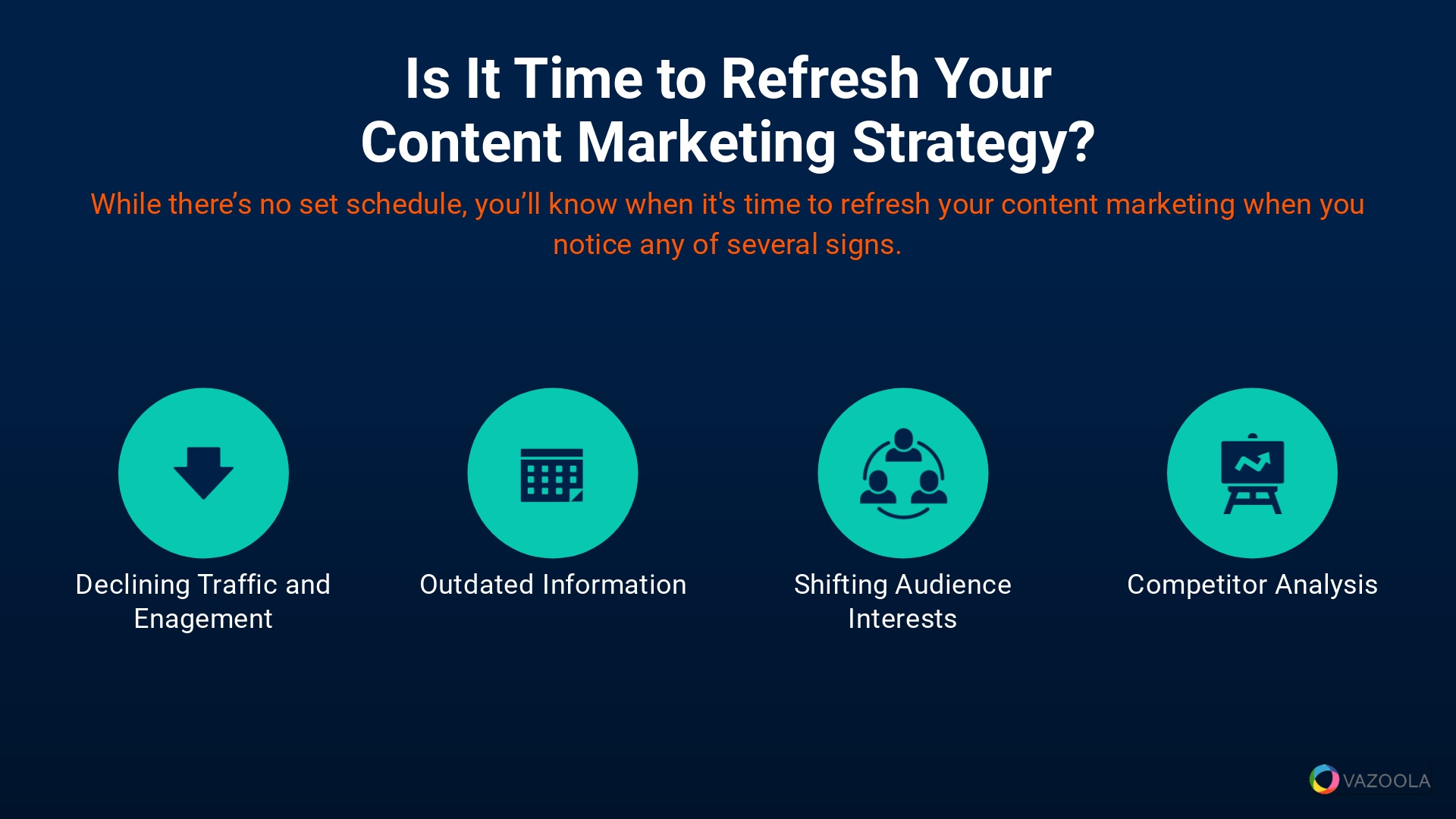
Does your content marketing strategy need a refresher?
How do you know when it’s time for an old content update?
While there’s no set schedule, you’ll know it's time to refresh your content marketing when you notice any of the following signs.
Declining Website Traffic and Engagement
If your website traffic or social media engagement drops, that’s a red flag demanding your attention. Without eyes on the page, you won’t accomplish much.
If fewer people are visiting your site or interacting with your posts, it’s a clear sign that your content isn’t resonating with your target audience. You’ll also be missing out on coveted leads and sales.
In our experience, when you regularly monitor traffic and engagement metrics, you’ll be able to spot downward trends and take action before the situation gets even worse.
Stale, Outdated Content
Industries evolve quickly. That’s no secret.
Content that was accurate and relevant a year ago now might be outdated and obsolete. Avoid outdated content by making sure your content reflects the latest trends, data, and best practices.
Outdated content can harm your credibility and discourage visitors from checking out – or staying on – your page.
Shifting Audience Interests
Audiences also change over time. Their interests, needs, and preferences evolve.
If your content doesn't also adapt, you risk losing relevance.
Instead, conduct regular audience research to understand your readers’ needs and wants. Why should they visit your page? What need does it fulfill? Then you can adjust your content accordingly.
Competitor Analysis
Don’t be fooled, your competitors are constantly updating their content. If you’re not doing the same, you risk falling behind.
Regularly analyze your competitors’ content to identify gaps in your own strategy. Look at the topics they cover, the keywords they target, and the types of content they produce.
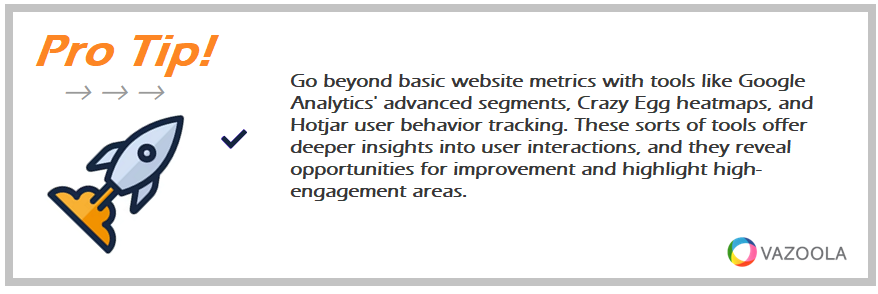
Go beyond basic website metrics with tools like Google Analytics' advanced segments, Crazy Egg heatmaps, and Hotjar user behavior tracking. These sorts of tools offer deeper insights into user interactions, and they reveal opportunities for improvement and highlight high-engagement areas.
How to Refresh Content for Your Marketing Strategy
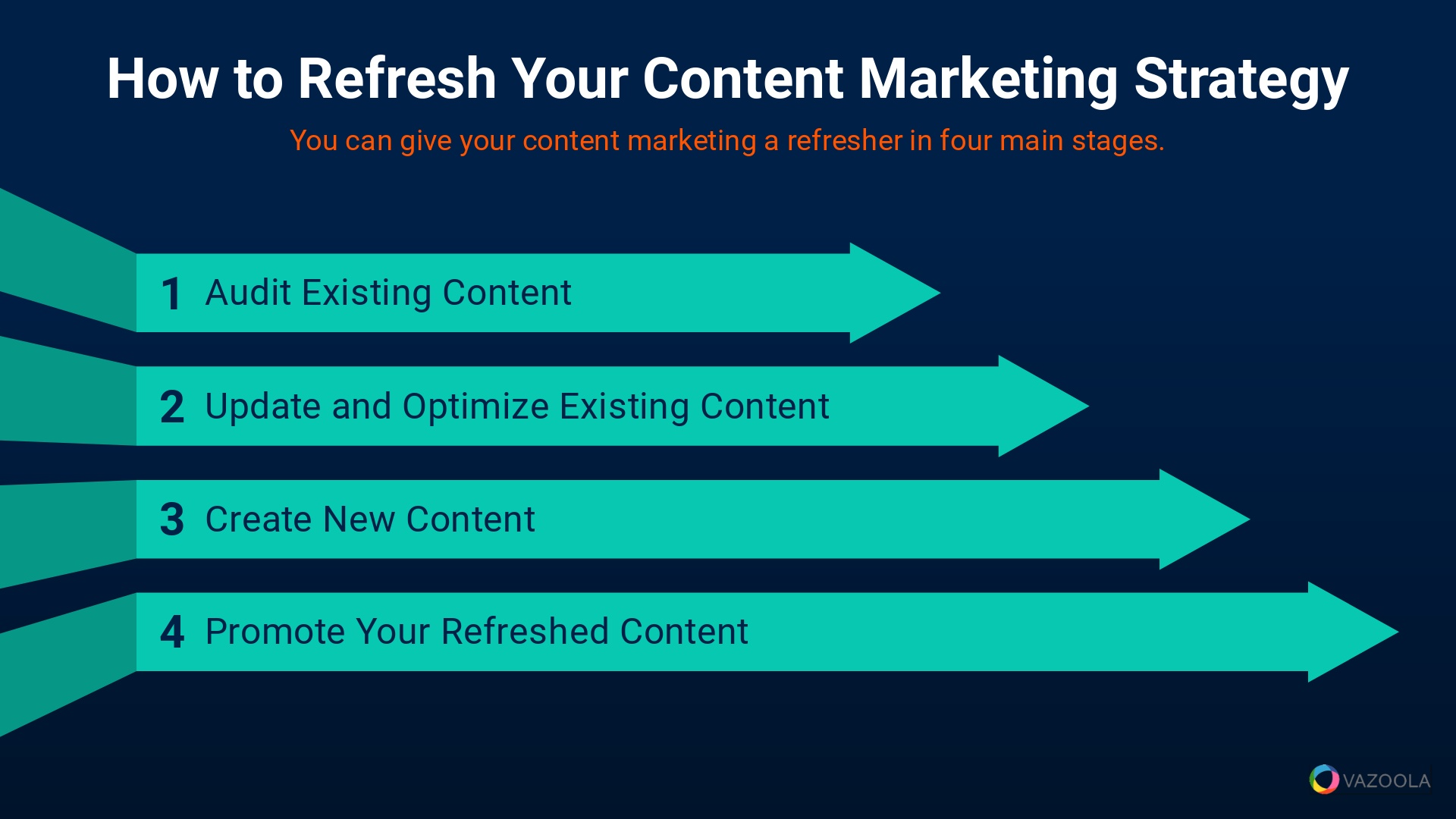
So, you’ve determined it’s time to refresh your content marketing strategy, but how do you refresh a website? You can give your content marketing a refresher in the following four main stages.
Step 1: Audit Your Existing Content
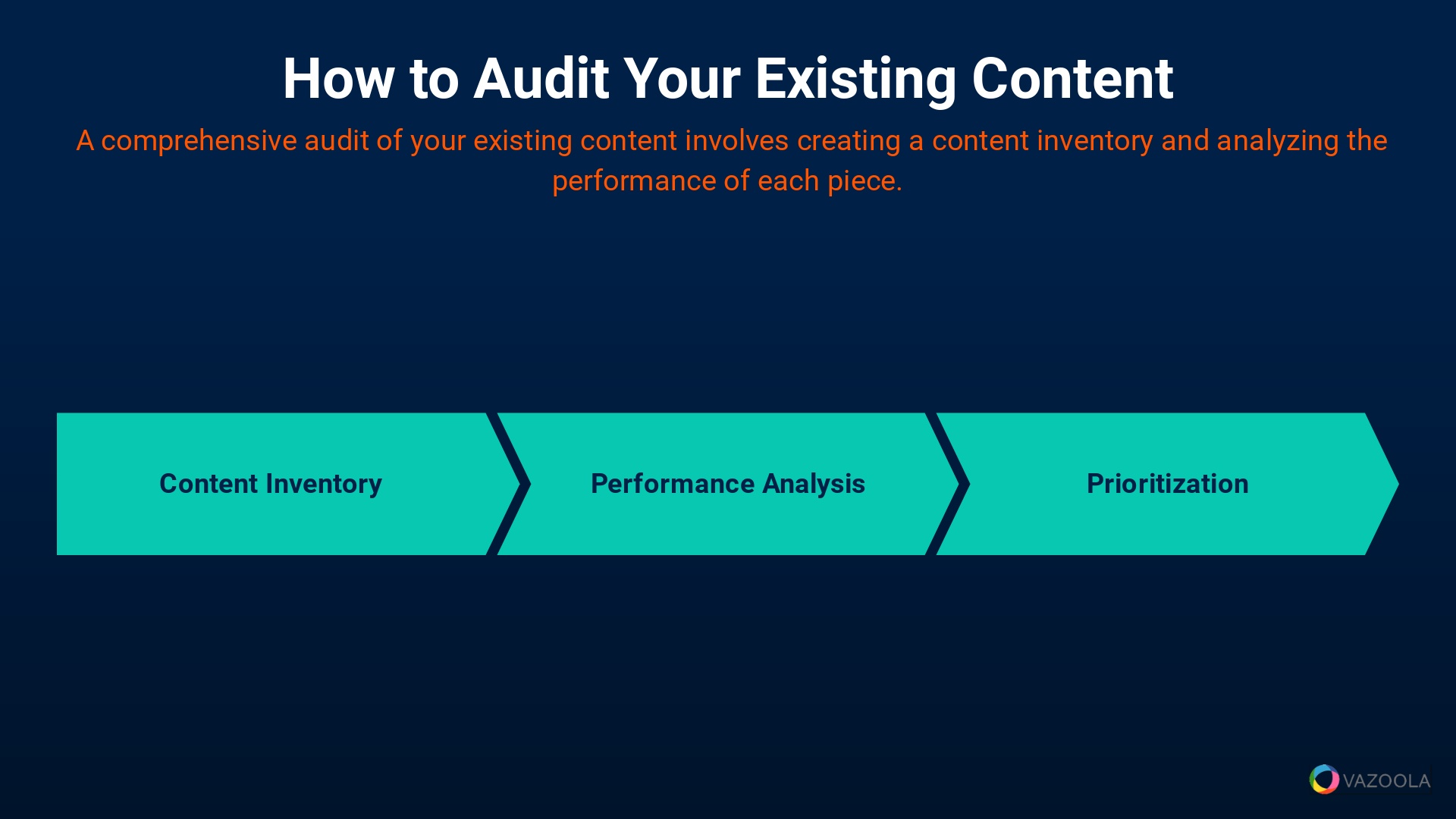
Start with a comprehensive audit of your existing content. What is a content audit? Why is a content audit useful?
You can audit your content by creating a content inventory and analyzing the performance of each piece.
Be sure to include the following elements in your audit:
-
Content Inventory: List all your content, including blog posts, articles, social media posts, videos, etc. Use tools like Google Sheets or specialized content audit tools to keep track of it all.
-
Performance Analysis: Evaluate how each piece of content is performing. Look at metrics like traffic, engagement, conversions, and backlinks. Tools like Google Analytics and social media insights can provide valuable data.
-
Prioritization: Identify your top-performing content, content with potential, and outdated or underperforming content. Focus your refresh efforts on pieces that have the potential to drive the most value.

Use A/B testing to compare old content versions against refreshed ones. Tools like Optimizely or Google Optimize let you test headlines, images, CTAs, and layouts. That way, updates lead to improved engagement and conversion rates.
Step 2: Update Content and Optimize
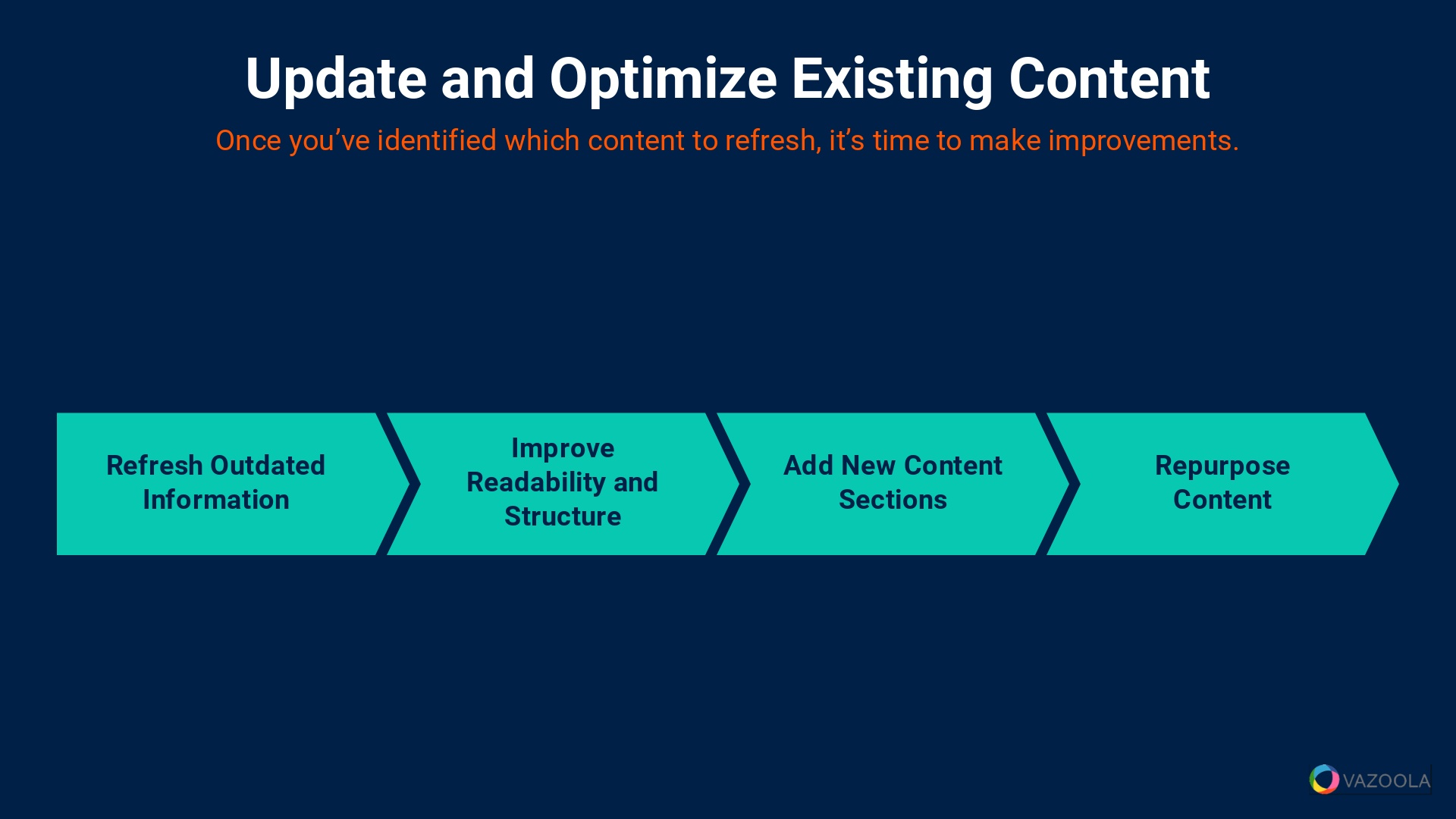
Once you’ve identified which content to refresh, it’s time to make improvements, optimize and republish content. This is what’s included in a content optimization strategy:
-
Refresh Outdated Information: Remove outdated content, and update statistics, dates, references, and examples to make sure your content is accurate and relevant. If you have a blog post on social media trends from 2020, for example, update it with 2024 trends.
-
Improve Readability and Structure: Break up long paragraphs, add headings and subheadings, and optimize formatting for better readability. Tools like Hemingway Editor can help make your content more readable.
-
Add New Content Sections: Expand on existing topics by adding new information, insights, or perspectives. If you have an article on content marketing basics, for instance, add sections on new trends or advanced techniques.
-
Repurpose Content: Republishing blog posts is a surefire way to refresh your strategy. Transform existing content into different formats for a wider reach. Refresh blog posts into linkable assets like videos, articles into infographics, or long-form content into social media snippets.
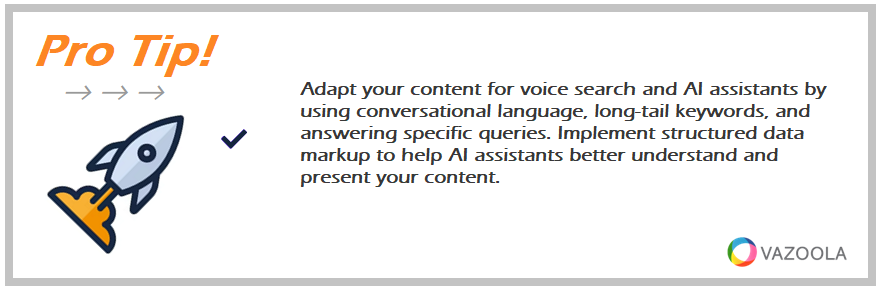
Adapt your content for voice search and AI assistants by using conversational language, long-tail keywords, and answering specific queries. Implement structured data markup to help AI assistants better understand and present your content.
Step 3: Create New Content
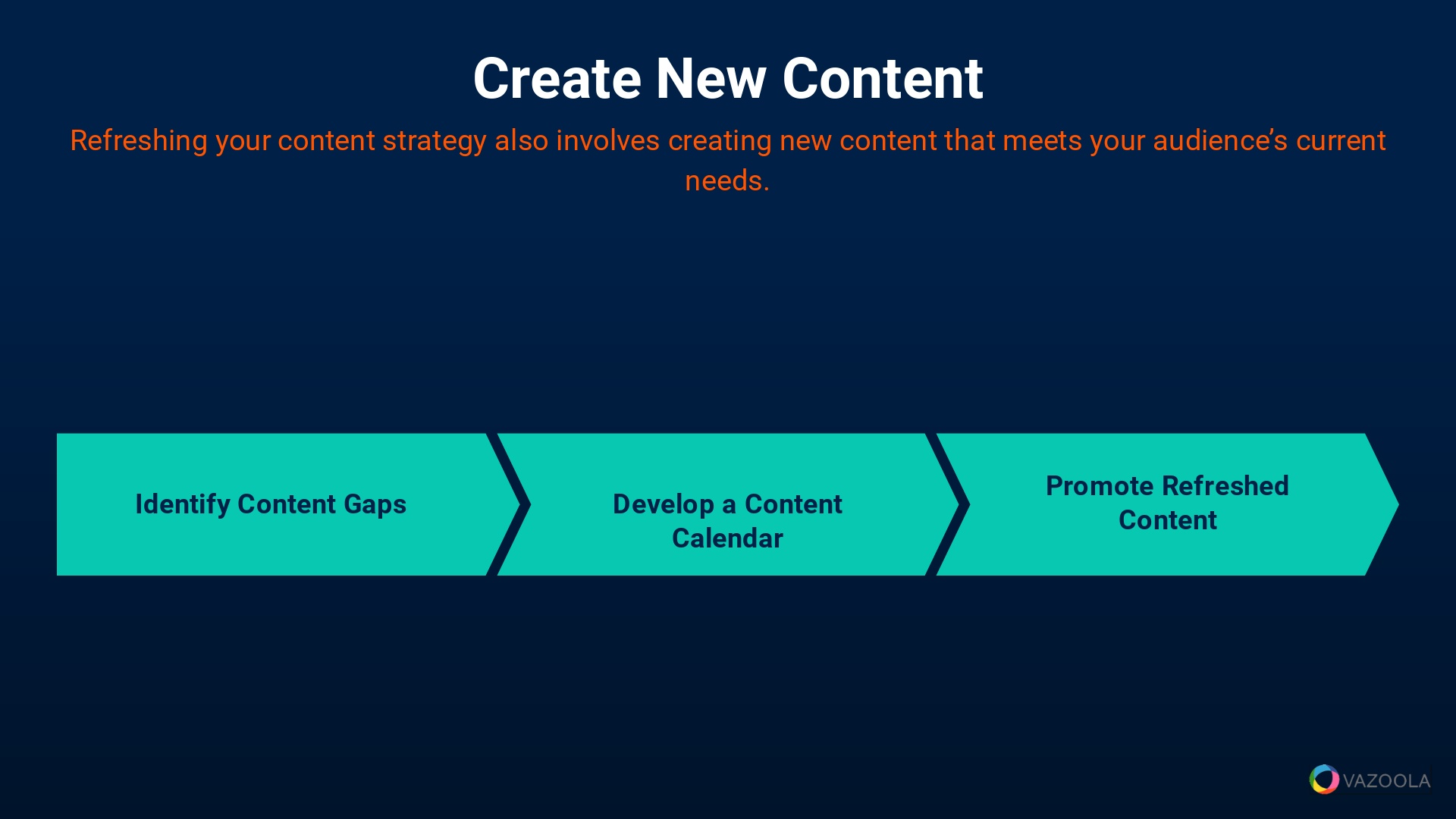
Refreshing your content strategy also means creating new content that meets your audience’s current needs.
Be sure you focus on the following factors when refreshing your content marketing strategy:
-
Identify Content Gaps: Use keyword research and audience insights to uncover topics not currently covered. Tools like SEMrush and Ahrefs can help identify these content gaps.
-
Develop a Content Calendar: Plan and schedule new content creation to make sure you have a consistent flow of fresh material. A well-structured content calendar helps keep your strategy organized and on track.
-
Diversify Content Formats: Experiment with different formats to appeal to a wider audience. Diverse formats might include videos, infographics, podcasts, interactive content, or webinars.
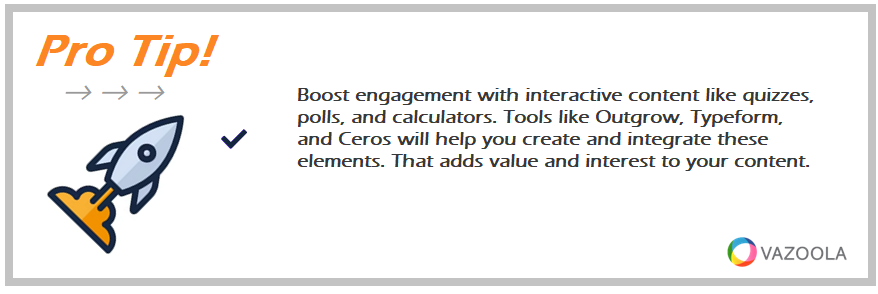
Boost engagement with interactive content like quizzes, polls, and calculators. Tools like Outgrow, Typeform, and Ceros will help you create and integrate these elements. That adds value and interest to your content.
Step 4: Promote Your Refreshed Content
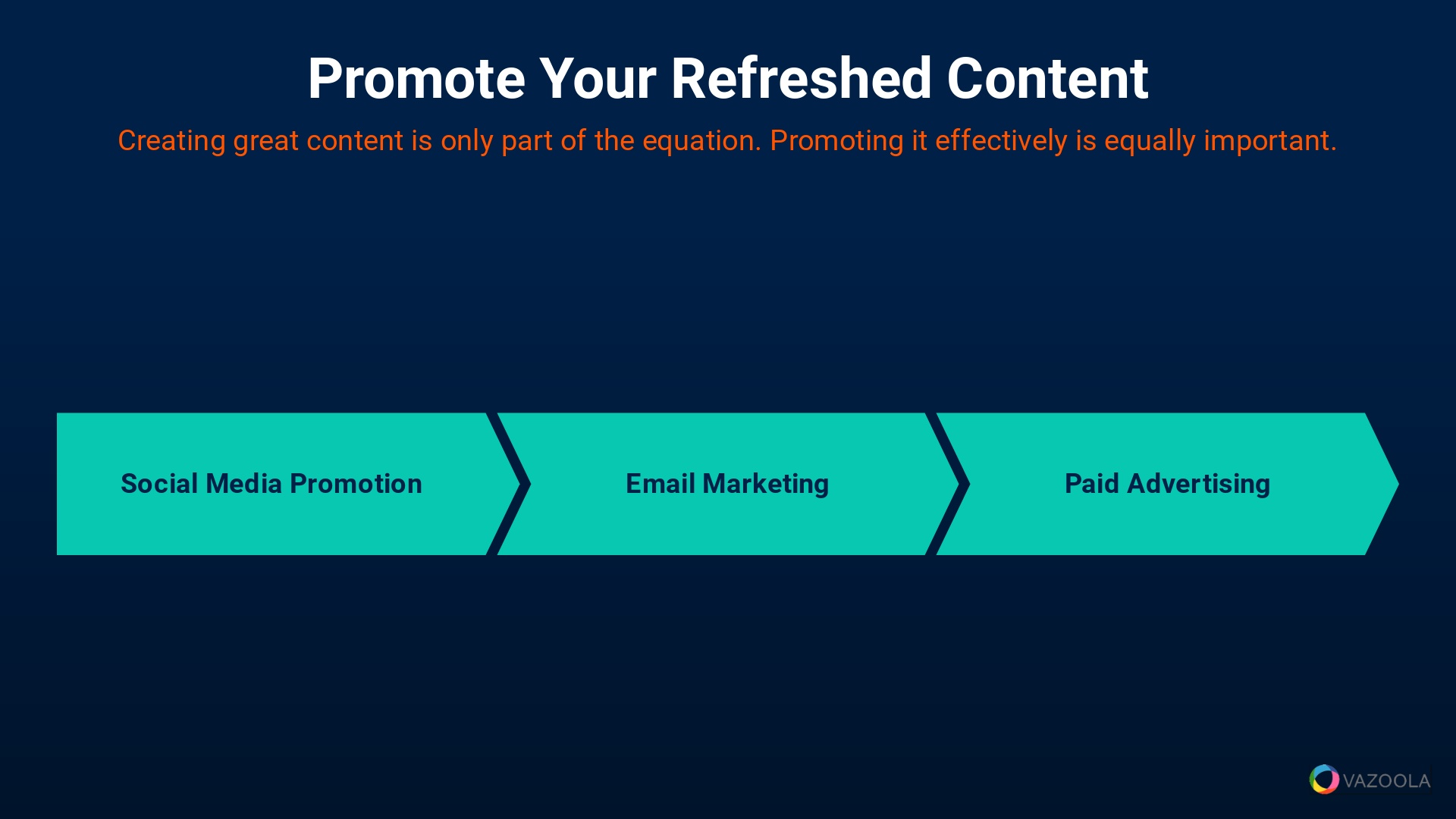
Creating great content is only part of the equation. Effectively promoting it is equally important.
Consider the following strategies that will help you promote your newly refreshed content:
-
Social Media Promotion: Share updated content on relevant social media platforms to reach a larger audience. Use engaging visuals and compelling headlines to attract attention.
-
Email Marketing: Leverage email newsletters to inform subscribers about refreshed or new content. Segment your email list to send targeted content to different audience groups.
-
Paid Advertising: Consider employing paid social media or search engine advertising to promote specific pieces of content. This extra promotion increases visibility and quickly drives traffic.
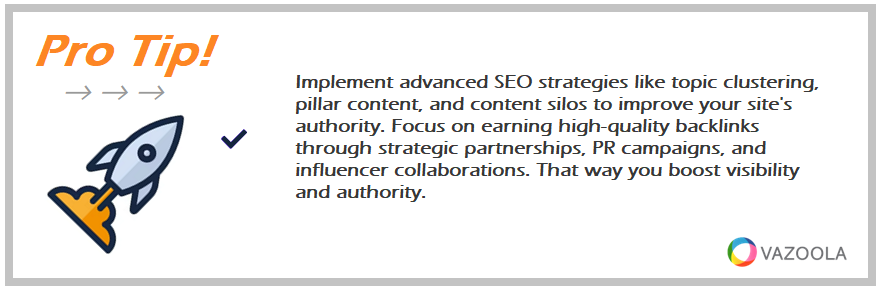
Implement advanced SEO strategies like topic clustering, pillar content, and content silos to improve your site's authority. Focus on earning high-quality backlinks through strategic partnerships, PR campaigns, and influencer collaborations. That way you boost visibility and authority.
Revitalize Your Digital Marketing Strategy with a Content Refresh
How often should you update website content? Our team at Vazoola has found you should update it as often as is needed to protect your traffic and visibility.
Refreshing your content marketing strategy is a vital element of maintaining engagement and driving results. Regular website content audits, updates, and new content creation keep your strategy aligned with current trends and audience preferences.
When you promote your content through different channels, you make sure it reaches the right audience. By following these steps, you can revitalize your content marketing efforts and achieve better outcomes.
By regularly refreshing your content marketing strategy, you stay ahead of industry changes and keep your audience engaged. It's an ongoing process that pays off in increased traffic, engagement, and conversions.
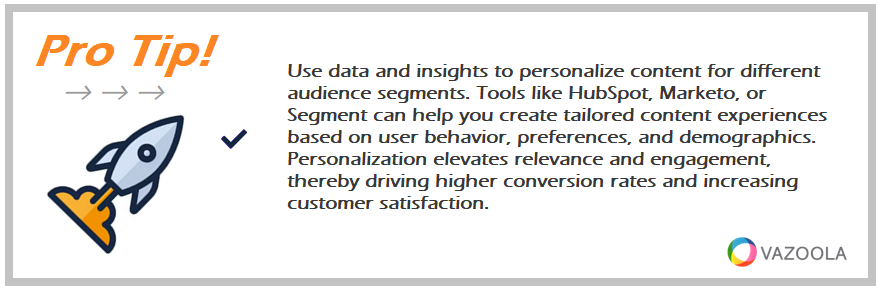
Use data and insights to personalize content for different audience segments. Tools like HubSpot, Marketo, or Segment can help you create tailored content experiences based on user behavior, preferences, and demographics. Personalization elevates relevance and engagement, thereby driving higher conversion rates and increasing customer satisfaction.

